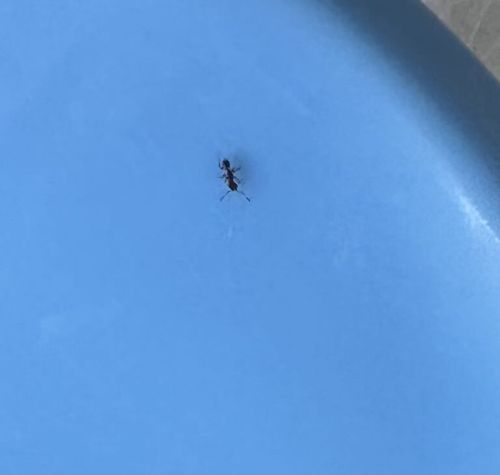Ant
Scientific Name: Formicidae
Order & Family: Hymenoptera, Formicidae
Size: Typically 2 to 20 mm, though some species can be larger.

Natural Habitat
Ants are found in nearly all terrestrial habitats worldwide, from forests and deserts to urban environments. They typically build nests in soil, under rocks, in wood, or in crevices.
Diet & Feeding
Ants have diverse diets, ranging from omnivorous scavengers that eat almost anything (insects, plant matter, sweets, fungi) to specialized feeders. Many species forage for food, some farm fungi, and others tend aphids for their honeydew.
Behavior Patterns
Ants are highly social insects that live in colonies, which can range from a few dozen individuals to millions. They exhibit complex social behaviors including division of labor (queens, workers, soldiers), communication through pheromones, and cooperative foraging. They undergo complete metamorphosis (egg, larva, pupa, adult).
Risks & Benefits
Risks: Some species can be household pests, contaminating food or damaging structures (e.g., carpenter ants). Certain species, like fire ants, can inflict painful stings. Benefits: Ants play crucial roles in ecosystems, including soil aeration, seed dispersal, pest control (preying on other insects), and decomposition of organic matter.
Identified on: 11/9/2025